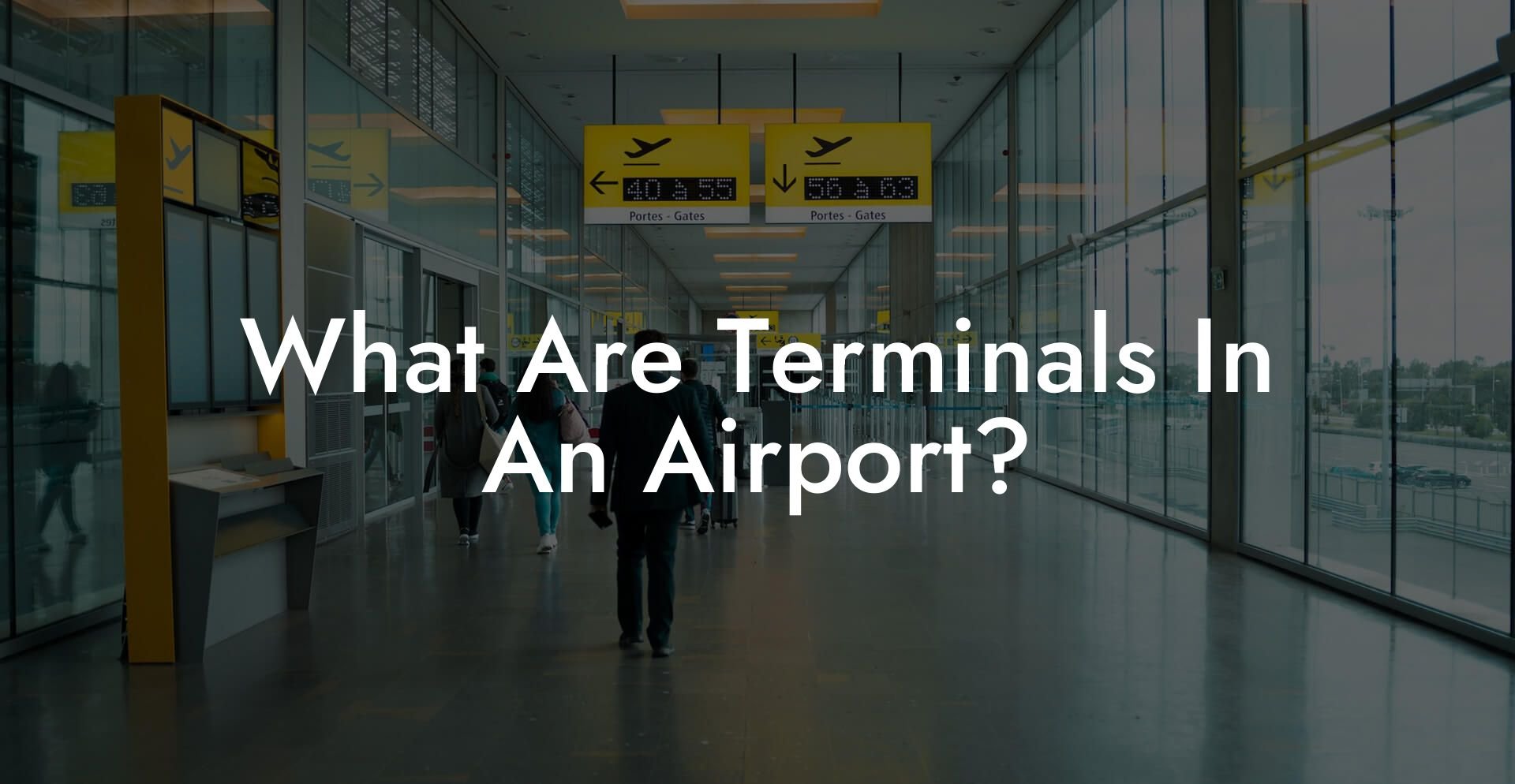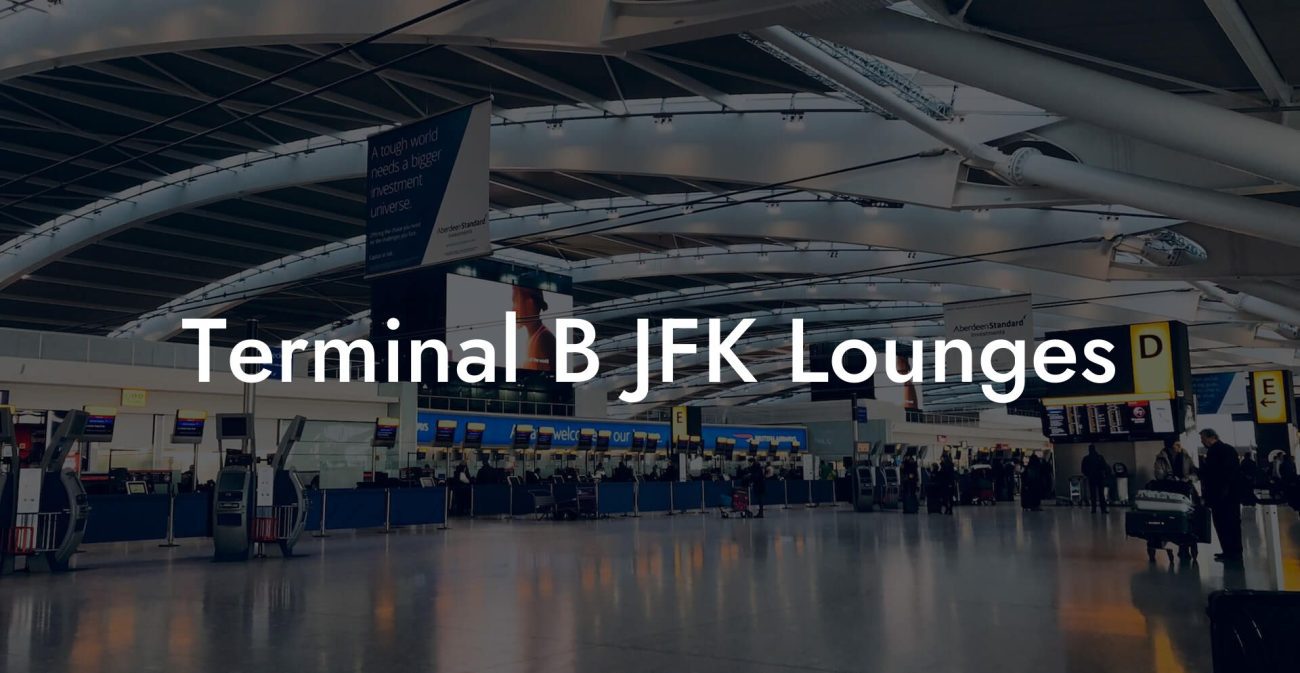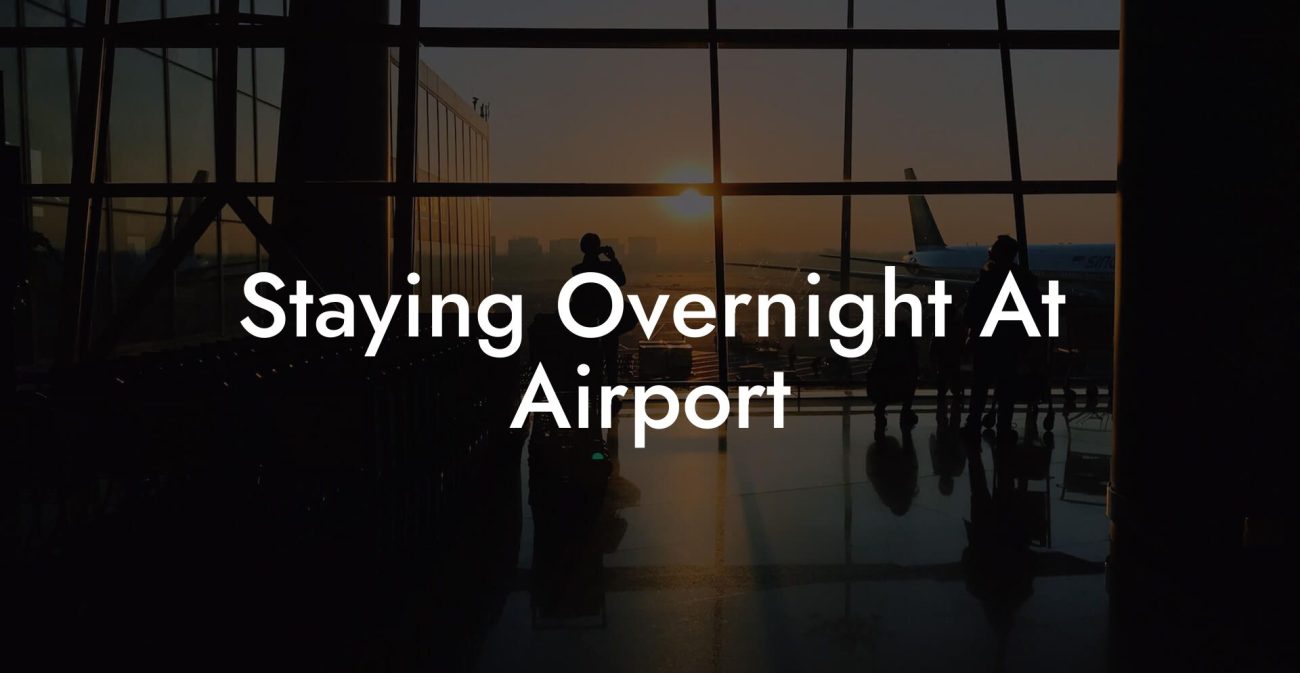Ever landed in an airport and wondered what all the fuss is about those sprawling buildings called terminals? You’re not alone. Beyond the maze-like corridors, trendy lounges, and yes, even those elusive airport sleeping pods, airport terminals are marvels of modern architecture and logistics. They’re the nerve centers that make the magic of air travel happen, from check-in to takeoff, with plenty of quirky tidbits and hacks along the way—if you’re brave enough to embrace the art of sleeping in airports.
Quick Links to Useful Sections
- Decoding the Airport Terminal: More Than Just a Waiting Room
- Anatomy of a Terminal: What’s Really Inside?
- The Check-In Zone
- Security and Screening Areas
- Boarding Gates and Waiting Lounges
- Shopping, Dining, and Entertainment
- Special Zones: Lounges, Sleeping Pods, and Rest Areas
- From Check-In to Departure: The Life Cycle of a Terminal
- Morning Madness and Peak Hours
- The Midday Lull
- Evening Transitions and Overnight Operations
- Terminal Architecture and Design: Where Function Meets Art
- The Evolution of Terminal Design
- Smart Technology in Terminals
- Eco-Friendly and Sustainable Innovations
- International vs. Domestic Terminals: What’s the Difference?
- Domestic Terminals
- International Terminals
- Specialized Terminals and Satellite Concourses
- Mastering Navigation: Tips and Tricks for Moving Through Terminals
- Plan Ahead with Airport Maps
- Follow the Signs (And Don’t Be Afraid to Ask)
- Use Mobile Apps and Digital Assistance
- Time Your Movements Wisely
- The Art of Airport Napping: Sleep Solutions in Terminals
- Exploring Airport Sleeping Pods
- Finding the Quiet Corners
- Tips for a Better Terminal Nap
- Facilities and Amenities: Beyond the Basics
- Shopping and Dining Experiences
- Exclusive Lounges and Rest Areas
- Health, Wellness, and Rejuvenation Stations
- Business Centers and Connectivity Hubs
- Security, Efficiency, and the Traveler’s Experience
- The Science of Screening
- Streamlining Passenger Flow
- Technology Shaping the Future
- Travel Hacks and Insider Tips: Maximizing Your Terminal Experience
- Download the Right Apps
- Dress for Comfort (and Style!)
- Scout Out Complimentary Snacks and Beverages
- Time Your Sleep Wisely
- Engage with Fellow Travelers
- Fueling the Journey: Food, Fun, and the Culture of Terminal Living
- Culinary Adventures
- Cultural Showcases and Art Installations
- Interactive Tech and Entertainment Zones
- How Technology is Redefining Terminals
- Automation and Self-Service Kiosks
- Biometric Technology and Smart Security
- Mobile Apps and Real-Time Updates
- Future Concepts: Virtual and Augmented Reality
- Preparing for Tomorrow: Resources and Community Support: Your Next Steps
- Bringing It All Together: The Terminal Experience as Part of Your Journey
- Terminal FAQs: Your Key Questions Answered
- Embrace the Terminal Adventure
Decoding the Airport Terminal: More Than Just a Waiting Room
An airport terminal is essentially a gigantic, multi-functional hub that quells the chaos of travel. Think of it as a bustling “city within a city” designed to cater to millions of passengers annually. Terminals are where your journey begins (or sometimes unexpectedly pauses), and they pack in everything from check-in counters and security screenings to duty-free shops and, of course, those comfy zones for catching some shut-eye between flights.
At its core, an airport terminal is designed to guide you seamlessly from one phase of your journey to the next. Whether you’re checking in for an international adventure or hopping on a quick domestic flight, the terminals provide all the essential services you need. And while large terminals can feel intimidating with their seemingly endless corridors and signs, getting acquainted with them can save you time, stress, and even a few dollars on last-minute snacks.
Anatomy of a Terminal: What’s Really Inside?
Let’s break down the anatomy of an airport terminal. It’s not just a giant waiting area but a cleverly designed ecosystem that orchestrates the organized chaos of air travel.
The Check-In Zone
The journey begins at the check-in counters. Here, you get your boarding pass, check in your luggage, and kick off what might be the longest day of your life—if you’re a frequent flier. With the advent of self-service kiosks and mobile check-ins, the process has become smoother and faster. But for some folks, interacting with a friendly airline representative is still part of the travel ritual.
Security and Screening Areas
Next come the security and screening checkpoints. These areas are the unsung heroes of air travel, ensuring that everyone on board is safe (and, let’s be honest, that includes a thorough search of your oversized carry-on snacks). Think of it as a mini obstacle course designed to prepare you for your flight—with fewer dodgeballs and more aluminum trays.
Boarding Gates and Waiting Lounges
Once you’re through security, you’ll find yourself in a vast waiting area, dotted with boarding gates. These areas are where the drama of last-minute gate changes and impromptu musical performances by enthusiastic street performers unfolds. For many, the gate area is also where they discover hidden gems like impromptu nap zones, complete with airport sleeping pods that are almost as coveted as first-class tickets.
Shopping, Dining, and Entertainment
Modern terminals are like miniature malls, brimming with shops, restaurants, and entertainment options. From duty-free aisles that offer luxury brands at slightly discounted prices to artisanal coffee shops and fast-food chains where you can fuel up pre-flight, there’s something for every taste. And if you’re into people-watching (a sport almost as intense as your favorite reality show), the terminal provides a front-row seat to human behavior in motion.
Special Zones: Lounges, Sleeping Pods, and Rest Areas
For those looking to catch some quality Zzz’s, many modern airports have gone above and beyond by integrating dedicated rest zones. Airport lounges offer comfortable seating, complimentary snacks, and sometimes even showers. But for the budget-savvy traveler or the adventurously sleep-deprived, airport sleeping pods are a game-changer. These high-tech mini rooms provide a cocoon of privacy—often with adjustable lighting, charging ports, and even a massage chair function—to help you recharge before your next leg of travel.
From Check-In to Departure: The Life Cycle of a Terminal
Airport terminals are in a constant state of transformation throughout the day. They’re designed for maximum efficiency during the early morning rush and late-night lull, yet always prepared for unexpected delays or last-minute gate changes. Here’s a look at what happens when the terminal lights come on:
Morning Madness and Peak Hours
Early mornings can be a frenzy of movement, as travelers hustle through the terminal with coffee in hand and a determined glint in their eyes. The check-in counters, security lines, and boarding gates come alive with urgency. For many millennial and Gen-Z travelers, this is the most relatable part of air travel—running the gauntlet to catch a flight while balancing the weight of sleep deprivation like a boss.
The Midday Lull
As the morning rush subsides, terminals experience a temporary calm. This is the perfect time to explore the duty-free shops, enjoy a gourmet meal, or even take a power nap in one of the dedicated sleep zones. The quieter environment allows you to catch up on travel blogs, binge-worthy series, or even that overdue book you’ve been meaning to finish.
Evening Transitions and Overnight Operations
Not every traveler’s journey ends with a daytime departure. Overnight flights mean that some terminals operate 24/7. During these hours, you might find your fellow travelers dozing in airport sleeping pods, while the remaining staff keep security, cleaning, and essential services running smoothly. The overnight ambiance can be oddly atmospheric, with the steady hum of machinery and soft lighting creating an almost surreal, futuristic vibe.
Terminal Architecture and Design: Where Function Meets Art
Behind the scenes, the design of airport terminals is a masterclass in architectural innovation and urban planning. Architects and engineers blend aesthetic appeal with rigorous functionality requirements, creating spaces that are as visually stunning as they are efficient.
The Evolution of Terminal Design
In the early days of air travel, terminals were modest and utilitarian. Fast forward to today, and they have evolved into architectural landmarks boasting high ceilings, vast glass facades, and state-of-the-art environmental controls. Modern terminal design heavily emphasizes passenger experience, incorporating elements like natural lighting, green spaces, and even interactive art installations.
Smart Technology in Terminals
Today’s terminals are equipped with smart technology that makes travel more convenient and secure than ever before. Digital signage, real-time flight displays, and mobile apps help you navigate the terminal like a pro. And for those concerned about cybersecurity, advanced biometric systems and automated check-in procedures enhance security without sacrificing speed.
Eco-Friendly and Sustainable Innovations
Sustainability is a buzzword that’s taken center stage in modern terminal design. From energy-efficient lighting to green roofs and rainwater harvesting systems, many airports are pushing the boundaries of eco-friendly architecture. Not only is this good for the environment, but it also enhances the overall passenger experience—proving you can travel in style while being kind to the planet.
International vs. Domestic Terminals: What’s the Difference?
While all terminals share the same basic purpose, there are distinct differences between international and domestic terminals. Understanding these differences can help you prepare for what to expect, no matter where your journey takes you.
Domestic Terminals
Domestic terminals are usually simpler in format. They cater to flights within the same country, which generally means more straightforward security protocols and fewer customs checks. The layout is often direct: a single check-in area, expedited security screening, and gate areas that offer a few key dining and shopping options. For Gen-Z and millennial travelers looking for a quick hop or a short layover, domestic terminals are usually streamlined and user-friendly.
International Terminals
International terminals are a whole different ballgame. They’re designed to handle longer flights and include extensive customs, immigration, and quarantine areas. You’ll often notice more significant investments in comfort, such as enhanced lounges, diverse dining options, and even sleeping pods that cater to long-haul travelers in need of a quick rest. The design of international terminals frequently reflects a cosmopolitan vibe, with art from around the world, multilingual signage, and high-tech amenities that help bridge the gap between cultures.
Specialized Terminals and Satellite Concourses
Some large airports feature specialized terminals or satellite concourses designed for specific airlines, low-cost carriers, or regional flights. These sections might offer a different atmosphere—often more minimalist, functional, and geared toward maximizing efficiency. If you’re familiar with the hustle of certain budget carriers, you might appreciate the streamlined nature of these specialized terminals, which prioritize speed and cost-effectiveness over luxury.
Mastering Navigation: Tips and Tricks for Moving Through Terminals
Getting around a massive airport terminal can feel like traversing a labyrinth designed to test your resolve—and your sense of direction. Here are some insider tips to help you navigate the terminal like a seasoned traveler:
Plan Ahead with Airport Maps
Before setting foot in the terminal, download the airport’s map or use a travel app that provides real-time navigation. This will give you a clear idea of where to find check-in counters, security lanes, lounges, and of course, those coveted sleeping pods.
Follow the Signs (And Don’t Be Afraid to Ask)
Modern terminals are equipped with abundant signage, but sometimes even the clearest signs can lead you astray. If you’re lost, ask a staff member—they’re usually more than happy to point you in the right direction. Plus, striking up a conversation might lead to some insider travel tips!
Use Mobile Apps and Digital Assistance
Many airports now offer dedicated mobile apps that not only provide maps but also real-time flight updates, estimated walking times, and even notifications about gate changes. Embrace the technology at your fingertips and turn your terminal wanderings into a smooth, well-informed journey.
Time Your Movements Wisely
Avoid rushing through the terminal during peak hours if you can. If you have some spare time before your flight, take a leisurely stroll, explore different sections of the terminal, or settle into an airport lounge. Sometimes, the journey within the terminal can be as enjoyable as the trip itself.
The Art of Airport Napping: Sleep Solutions in Terminals
For the modern traveler, the airport is not just a place of transit—it can also be a temporary home away from home. Whether you’re battling an overnight delay, catching a red-eye, or simply trying to squeeze in a quick nap before your next adventure, learning how to sleep in an airport is an art form that combines resourcefulness with a dash of humor.
Exploring Airport Sleeping Pods
If you’ve ever scrolled through travel blogs or watched a late-night vlog on airport sleeping pods, you’ll know that these nifty innovations are a traveler’s savior. Modern sleeping pods offer privacy, cushioned comfort, and sometimes even climate control, turning an otherwise dreary terminal bench into a mini haven of rest.
Finding the Quiet Corners
Not every airport can boast an army of sleeping pods, but even in their absence, quiet corners and designated rest zones exist. Look for areas away from the bustling crowds, proximity to restrooms (for convenience), and places where you can shield yourself from the overwhelming sounds of rolling suitcases and overhead announcements.
Tips for a Better Terminal Nap
- Travel Light: Keep essentials close to you—a neck pillow, earplugs, and a lightweight blanket can be game-changers when trying to sleep in a foreign environment.
- Privacy Hacks: Use a scarf or a travel blanket to create a sense of privacy around yourself. Even a simple barrier can work wonders in a busy terminal.
- Timing is Everything: Plan your sleep cycle around your flight schedule. Even a short power nap can help reset your energy levels, especially during long layovers.
- Set an Alarm: Do yourself a favor and set an alarm—even if you’re in a sleeping pod—to ensure you don’t oversleep and miss your boarding call.
Embracing the challenges of airport sleeping might take a bit of practice, but with the right tips and a positive attitude, you can turn the hangover of travel delays into a rejuvenating break.
Facilities and Amenities: Beyond the Basics
Airport terminals are not merely transit areas; they’re packed with facilities that cater to every whim of the modern traveler. From high-speed Wi-Fi and charging stations to curated art exhibits and even meditation zones, airports are transforming into lifestyle destinations.
Shopping and Dining Experiences
Whether you need a last-minute souvenir or a gourmet meal, the curated mix of retail outlets and eateries in terminals caters to every taste and budget. Duty-free sections let you snag luxury goods tax-free, while local dining options offer a taste of regional cuisine—providing a welcome break from run-of-the-mill airport fare.
Exclusive Lounges and Rest Areas
For those who value comfort, airline lounges offer a serene escape from the pandemonium of the terminal. With plush seating, high-speed internet, and often complimentary food and beverages, lounges are the perfect retreat to refresh yourself before a long flight.
Health, Wellness, and Rejuvenation Stations
Many modern terminals have taken note of the health-conscious traveler. Expect to find yoga rooms, massage chairs, and even mini-spas that offer quick facials or neck massages. These amenities are designed to help you unwind and relieve the stress that often accompanies travel.
Business Centers and Connectivity Hubs
For the digital nomad or the business traveler, designated workstations complete with charging ports, private meeting rooms, and high-speed internet are invaluable. These connectivity hubs allow you to mix a little business with pleasure, keeping you productive even while on the move.
Security, Efficiency, and the Traveler’s Experience
One of the most impressive feats of modern airport terminals is the emphasis on security and efficiency without sacrificing the traveler’s experience. Behind every friendly smile at the gate is a complex network of security protocols and logistical wizardry.
The Science of Screening
Cutting-edge technology ensures that both safety and speed are maintained at all times. With advancements such as biometric boarding passes, 3D scanning, and automated security lanes, the days of long, tedious queues are gradually fading away into a well-orchestrated process that minimizes delays while maximizing safety.
Streamlining Passenger Flow
Efficient design is key to managing millions of passengers daily. Smart terminal planning minimizes congestion through well-thought-out pathways, clearly marked sections, and crowd-monitoring systems that adjust operations in real-time. This attention to detail makes the terminal not just a point of transit, but a dynamic space that adapts to the ebb and flow of travelers.
Technology Shaping the Future
Digital signage, interactive kiosks, augmented reality navigation aids—if there’s a tech solution to improve travel, airports are on it. The use of real-time data analytics ensures that every aspect from check-in to boarding is optimized for speed and efficiency. For the tech-savvy traveler, these innovations are a delight, making each journey a smoother, smarter experience.
Travel Hacks and Insider Tips: Maximizing Your Terminal Experience
Now that you’ve got the lowdown on airport terminals, let’s dive into some pro tips that help you extract maximum comfort and convenience from your terminal experience—especially if you’re planning on getting some extra sleep in the lounge or a nifty sleeping pod.
Download the Right Apps
Several airport apps provide real-time updates on flight delays, gate changes, and amenities. An app like FlightAware or the official airport app can be your best friend when you need to jump between terminals or find that hidden rest zone.
Dress for Comfort (and Style!)
Forget the stiff travel uniform—opt for layers that keep you comfortable regardless of whether you’re waiting by the gate or sneaking in a nap under a cozy blanket. Comfortable shoes are a must, especially if you plan on exploring every nook and cranny of the terminal.
Scout Out Complimentary Snacks and Beverages
Many terminals offer complimentary water stations and sometimes even snacks in their lounges. Always keep an eye out for such perks, especially if you’re in no mood for overpriced airport grub.
Time Your Sleep Wisely
For those planning on testing the waters of airport sleeping pods, timing is everything. Try to align your nap with the quieter transit periods in the terminal to avoid disruptions. Setting a couple of alarms on your phone will ensure you wake up in time for your boarding call.
Engage with Fellow Travelers
A friendly conversation with a fellow traveler can not only help pass the time but might also yield insider tips about the terminal’s best-kept secrets—from the quietest lounge corners to the newest dining spots.
With these hacks up your sleeve, you’re ready to transform your terminal downtime into quality time—whether that means catching up on your favorite series, savoring a gourmet coffee, or finally indulging in that elusive airport sleep.
Fueling the Journey: Food, Fun, and the Culture of Terminal Living
Ever wondered why airport terminals double as culinary and cultural hotspots? Modern terminals aren’t just about catching flights—they’re about creating memorable experiences that can rival even the most scenic destinations.
Culinary Adventures
From Michelin-starred restaurants to quirky local food trucks, the dining options in an airport terminal can be surprising. These culinary adventures offer a refreshing break from the typical fast-food chains and can sometimes serve as a mini glimpse into the local culture. Experiment, indulge, and maybe even snap a photo or two for your social feed—the perfect blend of travel and Instagram-worthy moments.
Cultural Showcases and Art Installations
Many airports are investing in art and cultural showcases, turning sterile waiting rooms into dynamic galleries and interactive spaces. You might find installations from local artists, musical performances, or even pop-up cultural events that celebrate the city’s heritage. It’s all part of the effort to make your time in the terminal not just bearable, but genuinely enjoyable.
Interactive Tech and Entertainment Zones
For the tech-savvy generation, interactive zones equipped with virtual reality experiences, gaming centers, and multimedia exhibits provide a welcome escape from the routine of travel. These zones are prime spots to kill time, meet new people, or simply explore futuristic innovations that hint at the future of travel.
How Technology is Redefining Terminals
As we move further into the digital age, technology continues to redefine our experience in airport terminals. From biometric check-ins to virtual assistants, technological advances are streamlining processes and creating a more seamless travel experience.
Automation and Self-Service Kiosks
Automated check-in kiosks and self-service bag drops have become standard in most airports, eliminating the need for long lines and reducing stress levels. These systems not only speed up the check-in process but also give you more time to explore the terminal or even enjoy a power nap in one of those innovative sleeping pods.
Biometric Technology and Smart Security
Innovations like facial recognition and fingerprint scanners expedite the security process while enhancing safety. Though it might feel a bit sci-fi, these technologies contribute to a smoother, more efficient terminal experience—so you spend less time in queues and more time enjoying your journey.
Mobile Apps and Real-Time Updates
Forget the anxiety of wondering whether your flight is delayed—mobile apps now keep you updated in real-time. With notifications, interactive maps, and even personalized travel tips, technology is making every moment in the terminal as informed and engaging as possible.
Future Concepts: Virtual and Augmented Reality
Some airports are even experimenting with VR and AR to offer virtual tours and immersive experiences within the terminal. Imagine navigating the terminal with AR glasses that highlight your gate directions, nearby dining options, or even the history behind each architectural detail!
Preparing for Tomorrow: Resources and Community Support: Your Next Steps
Whether you’re a veteran traveler or embarking on your first flight, knowing how to maximize your time in an airport terminal can make all the difference. Begin by exploring online forums, travel blogs, and official airport social media channels for the latest updates on amenities, tips, and hacks.
Consider joining communities on platforms like Reddit, Facebook, or even Twitter where fellow travelers share their experiences, reviews of airport lounges, and secret spots within terminals that are perfect for a quick nap or an impromptu snack run. These communities are gold mines for real-time advice and can help you navigate everything from airport renovations to the location of the best sleeping pods.
Here are some actionable steps to start enhancing your terminal experience today:
- Do Your Homework: Before booking your flight, spend a few minutes reading up on the terminal layout and amenities. Many airports have detailed guides and interactive maps available on their websites or mobile apps.
- Invest in Portable Comfort: Equip yourself with travel accessories such as noise-cancelling headphones, a compact travel pillow, and a reusable water bottle. Small comforts can go a long way when you’re navigating a busy terminal.
- Join a Travel Community: Whether it’s a blog, a forum, or a Facebook group, connecting with other travelers can provide insights about the latest terminal hacks and must-visit areas within airports worldwide.
- Embrace Technology: Download and familiarize yourself with travel apps that offer real-time updates, interactive guides, and even booking options for airport lounges or sleeping pods.
- Plan Downtime Wisely: If you anticipate a long layover or flight delay, consider splitting your time between exploring the terminal’s amenities and catching a few winks in a designated sleep area.
By taking these proactive steps, you not only optimize your travel experience but also turn what might seem like waiting time into a series of enjoyable, productive moments. Remember, the terminal isn’t just a pit stop—it’s a dynamic part of your journey that can be both fun and functional.
Bringing It All Together: The Terminal Experience as Part of Your Journey
As airports continue to evolve, so too does the experience of traveling. What once was a mere transit point has now become a destination in its own right—a place where style meets substance, and efficiency harmonizes with leisure. Knowing what goes on behind the scenes, appreciating the design, and embracing the opportunities for rest and rejuvenation can transform even the most grueling layover into a memorable part of your travel story.
For the Gen-Z and millennial traveler, the terminal is more than just a gateway; it’s an extension of your lifestyle. From checking in with a quick selfie at the terminal’s iconic art installation to grabbing a bite at a trendy pop-up restaurant or snagging a coveted seat in a sleeping pod, every moment is an opportunity to enjoy the journey. With the right mindset and a few insider tips, you can turn the terminal experience into something truly exceptional.
Whether you’re a frequent flyer or the occasional adventurer, understanding airport terminals and leveraging their amenities can dramatically enhance your travel experience. So the next time you find yourself in a sprawling terminal, remember: this is where your story begins. And who knows? The hidden gems you discover today might just become your favorite part of tomorrow’s adventure.
Terminal FAQs: Your Key Questions Answered
Got questions about airport terminals and everything from the latest sleeping pods to advanced tech? We’ve compiled some of the most common queries to help you navigate your next terminal adventure with ease.
1. What exactly is an airport terminal?
An airport terminal is a building where passengers check in, go through security, wait for their flights, and access amenities like shops, dining areas, and lounges. Think of it as a mini-city designed to make your travel as smooth and comfortable as possible.
2. How are international terminals different from domestic terminals?
International terminals are typically larger and more complex, featuring customs, immigration, and enhanced security for global travelers. In contrast, domestic terminals have simpler processes, catering to flights within the same country.
3. What are airport sleeping pods, and how do they work?
Airport sleeping pods are small, private spaces designed for quick naps or longer rests. They usually come equipped with comfortable seating or beds, charging ports, and sometimes additional features like adjustable lighting and climate control.
4. Are airport lounges worth it for the average traveler?
If you’re seeking comfort, complimentary services, and a quiet place to relax, airport lounges are a smart option. They often provide free snacks, beverages, Wi-Fi, and sometimes even shower facilities, making them popular among frequent travelers.
5. How can I navigate a sprawling airport terminal?
Use the terminal maps available on airport websites or mobile apps, follow clear signage, and don’t hesitate to ask staff for directions. Also, planning your time and using digital tools can make navigating even the largest terminals much easier.
6. What amenities should I look for in a terminal if I plan to sleep there?
Look for dedicated quiet zones, sleeping pods, or lounges equipped with comfortable seating and charging stations. Bringing along travel accessories like a neck pillow, blanket, and earplugs can further enhance your rest experience.
7. How is technology improving the terminal experience?
Technology is streamlining check-ins, security, and navigation through self-service kiosks, biometric systems, real-time mobile apps, and even augmented reality guides. These innovations make travel faster, safer, and more enjoyable.
8. Can I find healthy dining options in most airport terminals?
Yes, modern terminals often feature a mix of dining options, including healthy choices such as salad bars, fresh smoothie stands, and local eateries offering nutritious meals.
9. Are airport terminals designed with sustainability in mind?
Increasingly, airport terminals are incorporating eco-friendly designs with energy-efficient systems, sustainable materials, and green spaces, all aimed at reducing the environmental footprint.
10. What resources can I use to stay updated on terminal amenities and tips?
Check official airport websites, mobile apps, travel blogs, and social media channels. Engaging with travel communities on platforms like Reddit or Facebook is also a great way to get insider tips and the latest updates.
Embrace the Terminal Adventure
Whether you are a tech junkie reveling in the latest biometric breakthroughs or a sleep-deprived wanderer on the hunt for the ultimate airport sleeping pods, the terminal experience is as dynamic as the people who pass through its doors. With every step, you’re part of a grand choreography that connects local services, global cultures, and personal journeys.
Your airport terminal isn’t just a pit stop—it’s a living, breathing space filled with hidden gems, opportunities to meet incredible people, and moments that transform mundane waits into memorable escapades. The next time you find yourself navigating its corridors, take a moment to appreciate the thoughtful design, the technological marvels, and the unexpected comforts that make air travel an adventure in its own right.
So pack your curiosity, download that travel app, and get ready to dive into the world of terminals. Whether you’re sharing your favorite terminal hack with friends on social media or enjoying a rare moment of peace in a secluded sleeping pod, remember that every journey starts at the terminal—and it’s worth savoring every minute of the experience.
Useful Interruption: Dive deeper into the world of airport sleeping guides with our most popular sections. If there is anything you think is missing or anything you would love for us to write about, just give us a shout.
- General Airport Sleeping Guides
- Travel Gear & Equipment Recommendations
- Regional and Airport-Specific Guides
- Airport Sleeping Pods & Reviews
- Health, Safety, and Comfort Tips for Airport Sleepers
Last week, I decided to try the world-famous "airport sleepover" experience. Imagine this: I'm lying on a bench in Terminal C, surrounded by suitcases that have seen more of the world than I ever will, and a PA system that sounds like a karaoke machine on a sugar rush. I pull out my travel pillow—which, by the way, is more like a sad deflated balloon—and declare, "Tonight, I’m the king of this terminal!"
Soon enough, fellow travelers become my unexpected audience. One guy, fresh off a red-eye, whispers, "Hey, do you think if we sleep long enough, we can catch our flight in our dreams?" I reply, "Sure, and maybe I'll even get an upgrade to first-class in my nap!" The airport lights flicker like a disco ball, and every time someone announces a delayed departure, it’s like a punchline to our impromptu stand-up routine.
As I finally drift off, I dream of a world where boarding passes are like VIP tickets to the best sleepover party ever—a party where the only baggage is the laughter you carry with you. Waking up, I realize the airport is still the same, but I now hold the honorary title of "Terminal Comedian," a title I wear with as much pride as my permanently mismatched socks!













